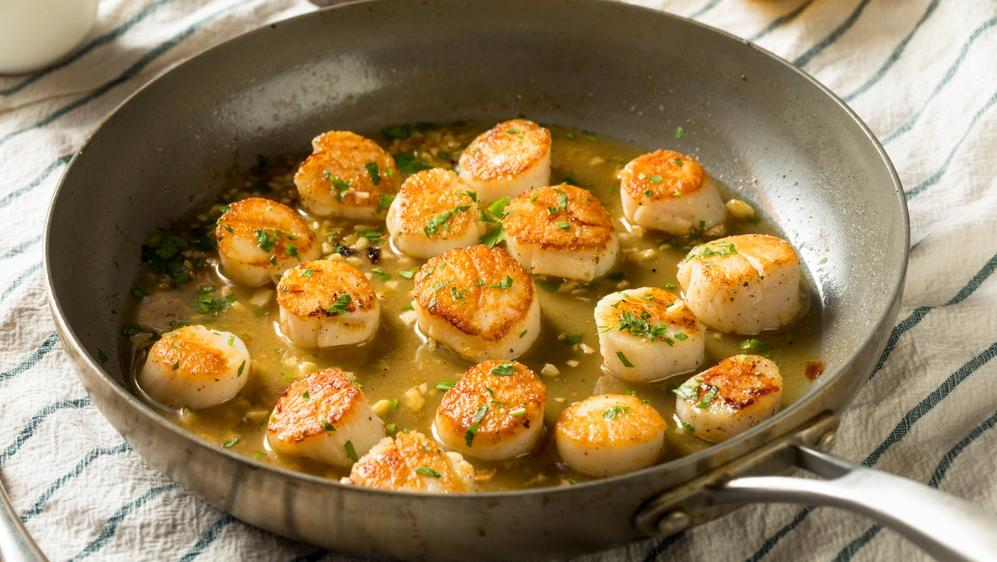Choosing The Right Cookware Is A Lifelong Journey
A longtime chef and restaurateur on the pots, pans, and pitfalls of home cooking.
We may receive a commission on purchases made from links.
Sometime in the early 1980s, I graduated from just feeding my husband and myself to actually cooking for us. I've had a love affair with pots and pans ever since.
Moving from my flimsy, mismatched Farberware to a full set of Calphalon was the first spark; it showed me how different cooking could feel with the right equipment. Granted, like any new relationship, there was much trial and error involved, learning which foods always stuck to the pan and which ones were liable to overcook (or undercook). There was even a new weight to each pan that I had to contend with, and storage challenges in our kitchen cabinets. But how could I complain? I had the whole set—I was a "real" cook now! The pots proved it, didn't they?
Soon, however, baking became my true love, shuffling cooking to the side. Thus, the Calphalon cookware took a back seat, and I returned to mere "feeding" mode. But then the latest pot would come along to make me fall in love all over again. The '80s were in full swing, and the cachet of being a "gourmet cook" had taken hold.
I had begun to bake full time in 1982, starting a dessert catering business when that didn't yet exist. I did cooking demos for All-Clad in the old Carson Pirie Scott department store on State Street and was "paid" in pots and pans. These beauties were three layers of steel and aluminum, and they were not only durable, but they also heated food quickly and evenly. I received a wealth of All-Clad's cookware: the massive 12-quart stock pot, the sauce pans ranging from tiny to large, and every sauté pan in production. I unwrapped each one with the care given to a newborn baby. And I began cooking again.
When I opened my first restaurant in 1991, I brought all the old Calphalon pots into that kitchen, where, over time, they grew dented and bent. Knowing they were now feeding the masses, I didn't mind watching them break down. They had a good life, and I had a good life at home with my All-Clad.
How to keep up with your cookware
Based on my history, cookware should last for decades—but so many brands fail to do so. At the restaurant, we added commercial nonstick frying pans to the mix, which had to be replaced way too often. Eggs required nonstick pans, and because of the abuses of the dishwashers (both human and machine), plus the constant overheating on the stove, two or three such pans were added to the mix every few months. The coating deteriorates over high heat, and when line cooks put a pan on the stove, they turn the knob to high. Every time.
At home, after years of gas stoves, I moved into an all electric building and soon had to adjust my thinking, learning how to make the dial numbers work for me. Luckily, this transition is not as hard as people think, and all my pots work on the glass-top stove; from there, it's all about maintenance. I have always used Bar Keepers Friend and a good, clean, gentle scrubber on all my pots. For badly stained bottoms, I make a slurry of BKF and hot water and pack it onto the pan bottom, then let it sit for several hours before scrubbing. If it needs more, I do it again.
I can't say there is one nonstick pan that is best—only that I know what sort of misuse will cause it to disappoint. Namely, the preheat setting should hover in the medium range, and only soft, non-abrasive utensils should be used against its surface. (I am using Misen now, which also does best with a medium setting.)
But for anyone looking to avoid the complications of nonstick surfaces, know that it is possible to get nonstick results from a shiny stainless pan. Opt for something tri-ply (even up the sides), and preheat the pan before adding any oil or ingredients to it. Add oil only when pan is hot and you are about to place food in it. Adding food and cold oil to a pan and letting it all heat up together causes the protein to absorb too much of the oil. If you want a brown or crispy sear on whatever you're cooking, make sure that item is as dry as possible when it hits the (oiled) pan.
These are just a few of the lessons learned from cooking in both home and commercial settings, but it all comes down to the same thing: show care for your equipment and it will care for you in return. Now, go forth and cook.
